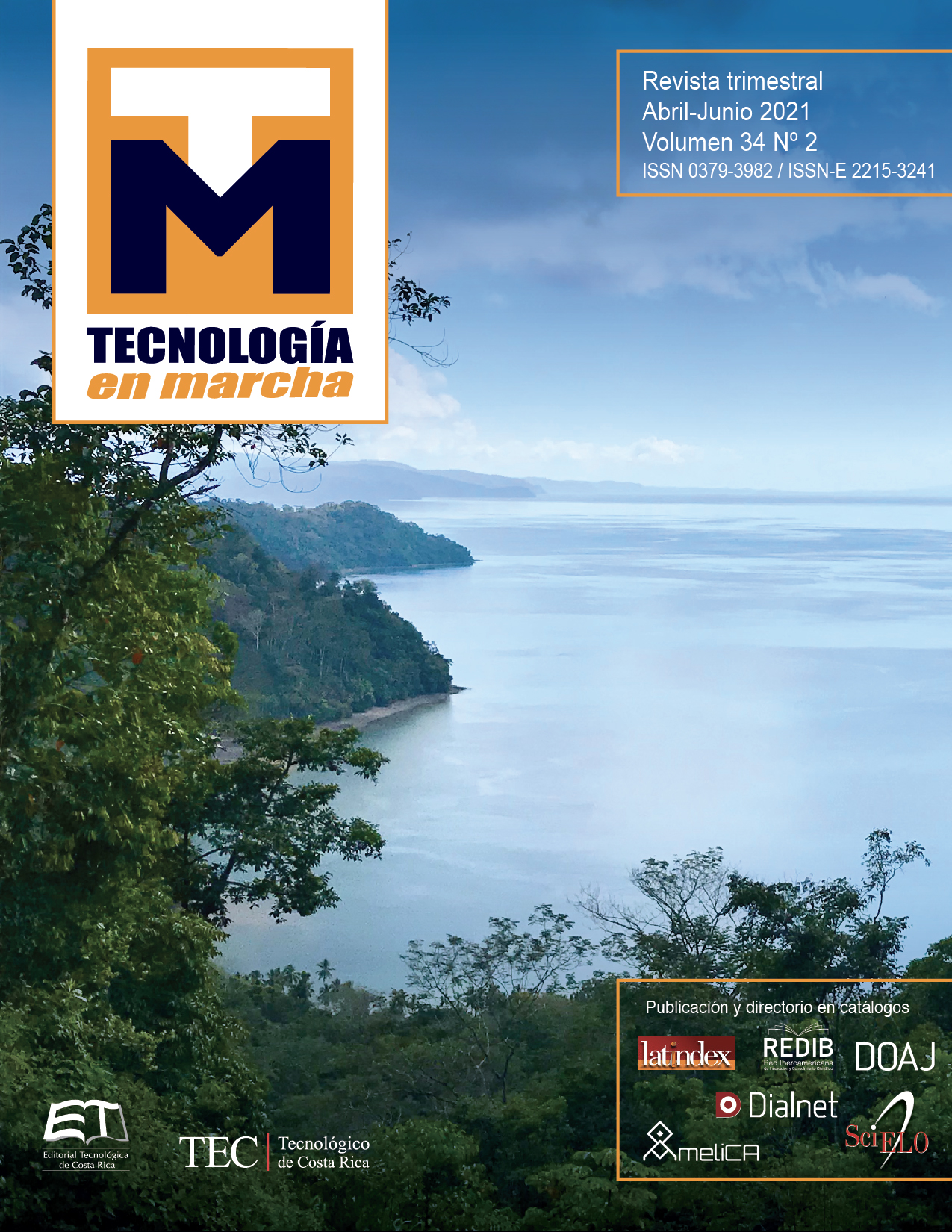Photoacustic study of gold nanoparticles by laser ablation
Main Article Content
Abstract
In the present thesis, the change in morphology and size of gold nanoparticles obtained by laser ablation was investigated using different reconfiguration methods. In the case of gold, the target was ablated with a pulsed Nd: YAG laser, (1064 nm, 37.48 mJ/p, 10 Hz, during 10 minutes), the absorption spectra present a single absorption maximum at 521 nm characteristic of spherical gold nanoparticles. The PLI technique was applied to the colloids with laser pulses of 532 nm wavelength, 25.8 mJ of energy during 6 minutes. The analysis by dynamic dispersion of light (DLS) showed that the NpsAu with PLI were 21 nm in diameter. In addition, it was found that the amplitude of the photoacoustic signal is directly and proportionally related to the concentration of NpsAu on the colloid, showing that the higher the concentration, the greater the photoacoustic response. From the research it was concluded that the focused PLI technique applied to colloids with NpsAg presents new morphologies. In the case of gold, a change in size was found.
Article Details

This work is licensed under a Creative Commons Attribution-NonCommercial-NoDerivatives 4.0 International License.
Los autores conservan los derechos de autor y ceden a la revista el derecho de la primera publicación y pueda editarlo, reproducirlo, distribuirlo, exhibirlo y comunicarlo en el país y en el extranjero mediante medios impresos y electrónicos. Asimismo, asumen el compromiso sobre cualquier litigio o reclamación relacionada con derechos de propiedad intelectual, exonerando de responsabilidad a la Editorial Tecnológica de Costa Rica. Además, se establece que los autores pueden realizar otros acuerdos contractuales independientes y adicionales para la distribución no exclusiva de la versión del artículo publicado en esta revista (p. ej., incluirlo en un repositorio institucional o publicarlo en un libro) siempre que indiquen claramente que el trabajo se publicó por primera vez en esta revista.
References
[2] D. Kaiser et al. National Nanotechnology Initiative Strategic Plan. Printed in the United States of America, oct 2016.
[3] V. Amendola y M. Meneghetti. “What controls the composition and the structure of nanomaterials generated by laser ablation in liquid solution?”, Physical Chemistry Chemical Physics, vol. 15 n° 9, pp. 3027-3046, 2013.
[4] R. Nikov et al. “Processing condition influence on the characteristics of gold nanoparticles produced by pulsed laser ablation in liquids”, Applied Surface Science, vol. 27, n° 4, pp. 105-109, 2013.
[5] M. DellʼAglio. (2015). “Mechanisms and processes of pulsed laser ablation in liquids during nanoparticle production”, Applied Surface Science. vol. 35, n° 2, pp. 55-59, 2015.
[6] J. Alba. “Estudio de la Ablación Láser mediante la Fotoacústica Pulsada: Síntesis de Nanopartículas”. Tesis de Maestría, Universidad de Guanajuato, México, 2013.
[7] G. López. Nanoestructuras metálicas; síntesis, caracterización y aplicaciones. Editorial Reverte, Universidad Autónoma del Estado de México, 2013.
[8] Y. Wang, E. Plummer y K. Kempa. “Foundations of plasmonics”. Advances in Physics, vol. 60, n° 5, pp. 799-898, 2011.
[9] A. Guerrero, R. Álvarez y L. Liz. “Nanoplasmónica basada en Química Coloidal”, in Anales de la Real Sociedad Española de Química, vol. 107, n° 3, pp. 221-228, 2011.
[10] T. Fernández. Caracterización de nanopartículas magnéticas y de oro para posibles aplicaciones biomédicas en diagnóstico y terapia. Tesis doctoral. Universidad Politécnica de Madrid, 2014.
[11] K. Hishan, A. Mohamed y R. Rania. “Effect of Experimental Parameters on the Fabrication of Gold Nanoparticles via Laser Ablation”. Optics and Photonics Journal, Giza Egypt, pp. 273-84, 2012.
[12] M. Takeshi et al. “Preparation and Shape-Modification of Silver Colloids by laser Ablation in Liquids: A Brief Review”. Science of Advanced Materials, vol 4, pp. 391-400, 2012.
[13] A. Pyatenko et al. “Mechanism of pulse laser interaction with colloidal nanoparticles”. Laser & Photonics Reviews, 7(4), 596-604, 2013.
[14] N. Barreiro et al. “Caracterización de la Espectroscopia Fotoacústica Pulsada del NO2 en aire”, in Anales Afa, vol. 20, 2008.
[15] K. Elsayed et al. “Effect of focusing conditions and laser parameters on the fabrication of gold nanoparticles via laser ablation in liquid”, Optics and Laser Technology, vol. 45, issue 1, pp. 495 – 50, 2013

